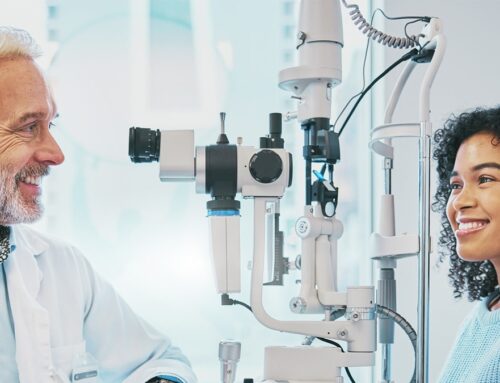The Legacy of Dr. Patricia Bath
In ophthalmology, few innovations have had as profound an impact as laser cataract surgery. This transformative procedure owes its existence to Dr. Bath, the laser cataract surgery inventor whose groundbreaking work continues to benefit millions of patients worldwide. By offering unprecedented precision, improved outcomes, and reduced recovery time, her invention—the Laserphaco Probe—has redefined the standards of cataract removal. To fully appreciate this advancement, let’s explore her medical journey and the barriers she faced inspired her relentless pursuit of innovation, ultimately leading her to completely transform traditional cataract surgery.
Dr. Patricia Bath – A Pioneer in Ophthalmology
Early Life & Education
Dr. Bath was born on November 4, 1942, in Harlem, New York City. Inspired by her parents’ emphasis on education and community service, she excelled academically, first earning a Bachelor’s degree in chemistry from Hunter College in 1964, followed by her medical degree from Howard University College of Medicine in 1968.
Overcoming Barriers
As an African American woman entering medicine in the late 1960s, Dr. Bath faced significant challenges in a predominantly male field. Encountering skepticism about her abilities from peers and faculty unaccustomed to seeing women – especially women of color – in such roles, limited her access to mentorship and professional networks. Despite these obstacles, she persevered and became the first African American to complete a residency in ophthalmology at New York University.
Advocacy
During her studies, she actively participated in civil rights activism, advocating for equality and diversity in education and healthcare, which inspired many medical professionals from underrepresented backgrounds to pursue careers in medicine.
Bringing Vision Care to Underserved Populations
Dr. Bath’s commitment to improving eye care led her to co-found the American Institute for the Prevention of Blindness (AIPB) in 1976. This organization focuses on protecting and restoring sight for all individuals, regardless of socioeconomic status. Through her work with AIBP, she emphasized the importance of community ophthalmology by:
- Raising awareness about preventable blindness.
- Advocating for accessible eye care services.
- Developing programs for early detection and treatment of eye conditions like cataracts and glaucoma.
Her efforts highlighted disparities faced by underserved communities – particularly among African Americans – and reinforced her belief that “eyesight is a basic human right.” This community-focused approach complemented her invention of the Laserphaco Probe by ensuring that advancements in eye care reached those most in need.
The Laserphaco Probe – A Breakthrough In Cataract Surgery
Dr. Bath’s most significant contribution is undoubtedly the invention of the Laserphaco Probe. Beginning her research in 1981, she recognized that laser technology could significantly enhance cataract surgery outcomes. After nearly five years of development, she patented the Laserphaco Probe in 1988—making her the first African American woman physician to receive a medical patent in the United States, simultaneously becoming the laser cataract surgery inventor.
Why Was It a Breakthrough?
The Laserphaco Probe revolutionized cataract surgery by combining laser fragmentation with ultrasonic removal:
- Precision: The device creates incisions as small as 1 millimeter, allowing for sutureless procedures that minimize damage to surrounding tissues.
- Reduced Pain: Patients report significantly less discomfort during and after surgery compared to traditional methods.
- Improved Success Rates: Studies show that surgeries performed with the Laserphaco Probe have lower complication rates and faster recovery times—enabling patients to return to daily activities sooner.
Before Dr. Bath’s invention, cataract surgery involved larger incisions and longer recovery times. The Laserphaco Probe allows for smaller incisions—resulting in quicker healing and less postoperative pain. This minimally invasive approach has not only improved patient comfort but also expanded possibilities for outpatient procedures. As a result of her contributions as the laser cataract surgery inventor, this technique has been adopted worldwide—restoring sight to millions and setting new standards for cataract treatment.
The Lasting Legacy of the Laser Cataract Surgery Inventor
While Dr. Patricia Bath passed away on May 30, 2019, her legacy continues to inspire future generations of medical professionals. As the laser cataract surgery inventor, her groundbreaking work has transformed cataract surgery, making it safer, more precise, and less painful while setting new standards for future advancements in eye care technology.
Everything You Need to Know About Modern Cataract Surgery In One Place
If you’re over 55 and seeking more information about laser cataract surgery, please visit our Resource Page: The Complete Guide to Laser Cataract Surgery for comprehensive information on everything you need to know about it, from it being bladeless and gentle to recovery and cost.











